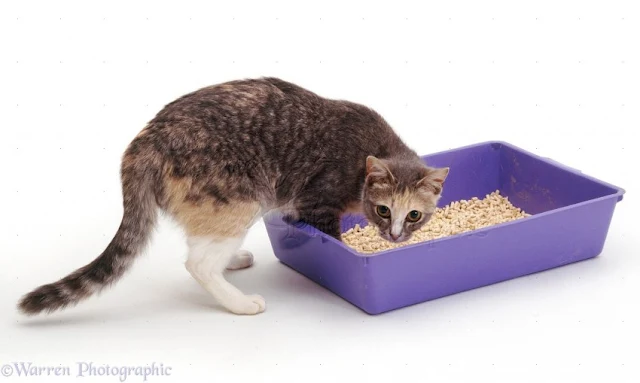I believe that the disease toxoplasmosis is somewhat underrated by many cat caregivers probably because the symptoms in people and cats are often all but invisible. But many are asymptomatically infected.
The 24-hour window
Toxoplasmosis is one of the most prominent detriments to the overwhelming benefits of living with a domestic cat companion. A lot has been spoken about the danger of getting toxoplasmosis from your cat's faeces. This comes from the fact that domestic cats being the primary vector of the disease shed toxoplasma gondii oocysts in faeces for a short period of time after they been exposed to it.
 |
| Toxoplasma gondii oocyst |
Although this is a one-off event covering a 2-week period it does happen, which is why domestic cats are heavily criticised by people who dislike cats. But the CDC in America tells us something very important about the shedding of oocysts in cat faeces and it is this. They say that they are only infective (i.e. capable of passing on the disease) after they've been in the environment i.e. outside of the domestic cat for more than one day and between 1-5 days.
Therefore, there is a window between the moment a domestic cat defecates in the cat litter to 24 hours later when their faeces are not infective in terms of the toxoplasma gondii protozoan. That being accepted, if a cat owner cleans out the litter tray every day within 24 hours of it being used by their cat, they will not be exposed to infective toxoplasma oocysts.
This is provided they have been careful in cleaning the litter tray the day before and ensured that no faeces remain. To recap, if a cat caregiver ensures that they thoroughly clean the litter tray daily (on a strict basis) they should pretty well eliminate the possibility of being infected by this zoonotic disease through contact with a cat's faeces. I think that is quite an important statement because it deals effectively with this mode of transmission which has been discussed a lot on the Internet.
No raw treats or unpasteurised milk
And what I said above can be supported by this further information. If you only provide an indoor cat with commercially manufactured cat food there is no possibility that they can ingest the protozoan in food. However, if you feed them raw pork or beef or unpasteurised dairy products which might contain the toxoplasma organism, and they might contract the disease. So, there's two sides to this preventative process. You don't let your cat ingest the protozoan and you prevent them transmitting the protozoan through their faeces as described above. Tackled this way I don't perceive a problem with this disease for a family who looks after a full-time indoor cat.
 |
| Clean it every 24 hours for indoor cats to avoid a toxoplasma gondii infection from cat feces. Photo: Warren Photographic. |
Children exposed to cats and mental health when adults
Today, I also read about a study which stated that, on my interpretation, children exposed to the family's domestic cat are 8 percent more likely to suffer from some sort of mental health problem when they are an adult compared to those adults who were not exposed to a domestic cat when there are children.
In round terms, what the study concluded is that due to the possibility of being infected with toxoplasmosis when they are children, they are more likely to have mental health problems because of the presence of this disease in the brain when they are adults. It's a relatively small added risk but it is, at 8%, recognisable.
Please click on this link when you have finished reading this page for a cross-post on this topic.
We don't need to believe in the study but we should at least take note of it. Clearly, the tip about the cat litter that I mention above is significant in eliminating this added risk. Particularly as it is probably not unlikely that children will be assisting the household by cleaning out the cat litter tray.
If they follow the method that I have mentioned it should all but eliminate the risk and place children with cats on a par with other children who don't come into contact with a cat in terms of mental health when they are adults.

ليست هناك تعليقات:
إرسال تعليق
Your comments are always welcome.